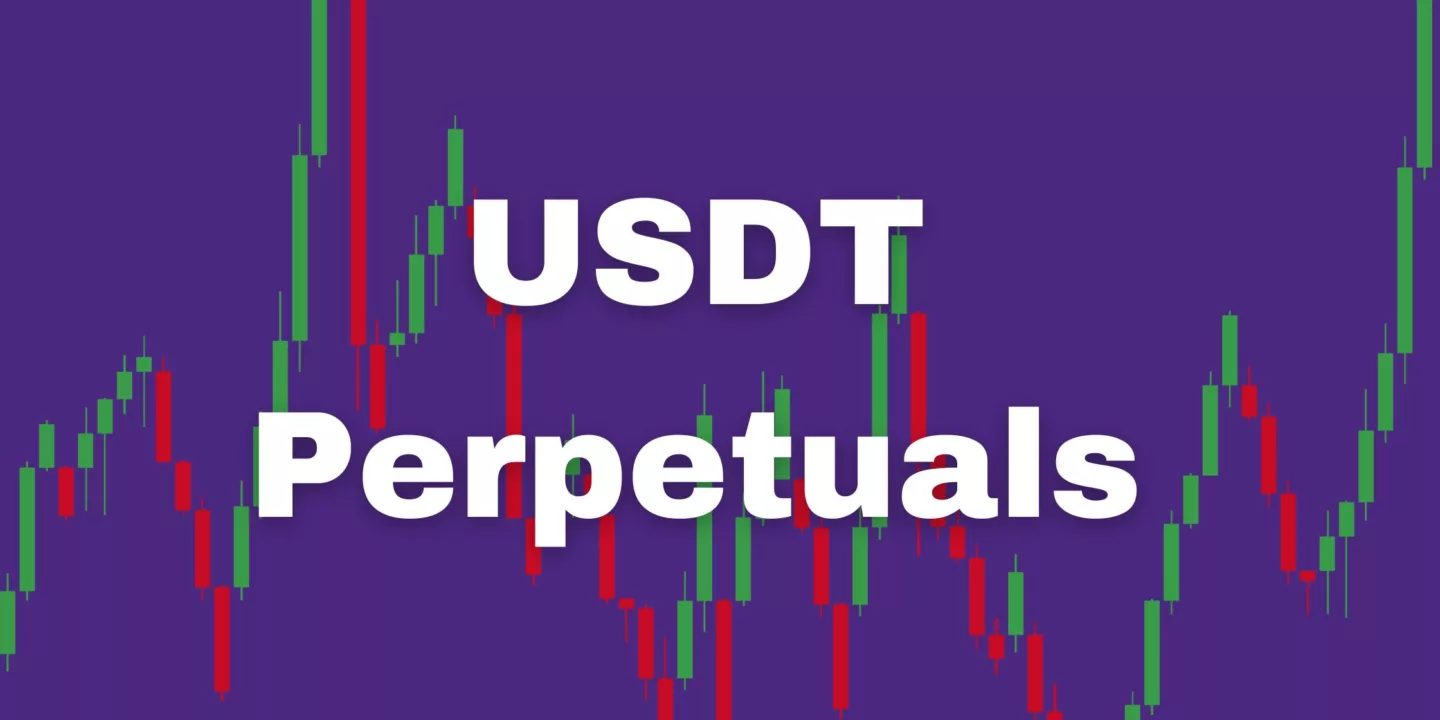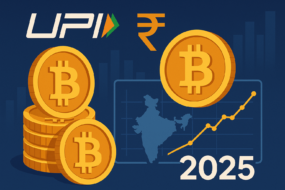
Introduction to USDT Perpetual
The rapid evolution of the cryptocurrency market has spurred innovative trading instruments designed to meet the diverse needs of traders. Among these innovations, USDT perpetual has emerged as a powerful tool for market participants seeking flexibility and efficiency.
Unlike traditional futures, these offer no expiration date and are settled in USDT (Tether), providing a stable settlement currency in a volatile market. This guide explores what USDT perpetual are and discusses why they are gaining traction. Read along!
Key Takeaways
- USDT perpetual and how it differs from other crypto derivatives
- How USDT perpetual work in terms of contracts, margin, and settlement
- Advantages and risks of trading USDT perpetual
- Ways to manage leverage and margin in USDT perpetual contracts
What Are USDT Perpetual?
USDT perpetual is a form of cryptocurrency derivative that allows traders to speculate on the future price of an asset without ever having to own the underlying asset. Instead of expiring on a predetermined date, these are “perpetual,” meaning they can be held indefinitely as long as the trader maintains the required margin.
Key Differentiators from Other Crypto Derivatives
USDT perpetual stands out from other crypto derivatives due to their unique features, offering flexibility, stability, and efficient price alignment for traders in volatile markets.
- No Expiry Date: Traders can hold positions indefinitely without rolling over, providing long-term flexibility and eliminating expiry pressure.
- USDT Settlement: Settle in USDT, reducing exposure to cryptocurrency volatility and ensuring a more stable trading environment.
- Funding Rate Mechanism: A periodic funding fee balances contract and spot prices, maintaining market stability between long and short positions.
- Leverage Options: Traders can amplify exposure using leverage, increasing potential profits and heightening risks, making proper risk management essential.
How USDT Perpetual Work
SDT perpetual function through a structured trading model, margin requirements, and a unique settlement process. Here’s how:
Trading Structure
- Long/Short Positions: Allows traders to speculate on price movements without owning the asset.
- Position Size: Standardized units define exposure clearly.
- No Expiry: Positions can remain open indefinitely if margin requirements are met.
- USDT Settlement: Provides a stable trading environment by reducing exposure to crypto volatility.
Margin and Risk Management
- Initial Margin: Upfront collateral required to enter a trade.
- Maintenance Margin: Minimum balance needed to prevent liquidation.
- Risk Exposure: Higher risk with increased margin utilization.
Price Alignment and Settlement
- Funding Rate: Periodic payments ensure price stability between perpetual and spot markets.
- Regular Adjustments: Funding fees are exchanged every 8 hours.
- Holding Costs: Long-term positions may incur funding charges, affecting profitability.
Why USDT Perpetual Are Gaining Popularity
Several factors contribute to the rising adoption of USDT perpetual in the crypto trading arena. These include:
- Stability Through USDT Settlement: Reduces exposure to crypto volatility, providing a predictable trading environment.
- Flexibility in Trading: No expiry allows both short-term and long-term trading strategies.
- Enhanced Liquidity: High liquidity ensures quick trade execution with minimal slippage.
- Versatility in Strategies: Supports hedging, arbitrage, speculation, and leveraged trading.
- Accessibility: User-friendly platforms and educational resources attract more traders.
Advantages and Risks of Trading USDT Perpetual
While USDT perpetual offers significant opportunities, they also come with inherent risks. These include?
Advantages
The advantages of trading USDT perpetual include:
- No Contract Expiration: Traders can hold positions indefinitely, which is ideal for long-term speculative strategies or hedging portfolios without the pressure of contract rollover.
- Leverage Trading: Leverage enables traders to magnify potential returns without requiring a substantial capital outlay. This capital efficiency is attractive, especially in markets where price movements are significant.
- Stable Settlement Currency: Settling in USDT helps reduce the volatility seen with other cryptocurrencies, providing a more stable trading experience.
- Hedging Capabilities: Perpetual are excellent tools for hedging. For instance, traders holding long-term positions in spot markets can use short positions in perpetual to offset potential losses.
Risks
While USDT perpetual offers several advantages, they also come with inherent risks that traders must consider before engaging in the market:
- Leverage-Induced Losses: While leverage can boost profits, it can equally amplify losses. High-leverage trading requires strict risk management, as small adverse price movements can lead to significant losses or liquidation.
- Funding Rate Expenses: The periodic funding fees, while essential for market balance, can accumulate over time. This cost can erode profits, particularly for traders holding positions over extended periods.
- Market Volatility: Cryptocurrency markets are known for their rapid and often unpredictable price movements. Even with a stable USDT settlement, extreme volatility can lead to unexpected losses.
- Complexity and Learning Curve: For beginners, the concepts of margin, leverage, and funding rates can be daunting. Without proper education and risk management strategies, new traders might face a steep learning curve.
Margin Management Strategies
Some ways to effectively manage leverage and margin in USDT perpetual contracts are:
- Start with Small Positions: Gradually increase exposure instead of making large trades at once.
- Set Stop-Loss Orders: Automatically exit trades if the market moves unfavorably to limit losses.
- Monitor Margin Levels: Regularly check balances and add collateral if needed to prevent liquidation.
- Diversify Trades: Spread investments across different positions to reduce overall market risk.
- Analyze Funding Costs: Keep track of funding fees to assess their impact on long-term holdings.
Conclusion
USDT perpetual offers a compelling combination of flexibility and advanced trading capabilities. Their no-expiry feature, stable settlement in USDT, and inherent leverage options make them attractive to both speculative traders and long-term investors. However, the amplified risks associated with leverage and the ongoing cost of funding rates underscore the need for disciplined risk management and continuous market education.
Mudrex stands out in this evolving landscape by providing traders with a secure, user-friendly platform and a wealth of educational resources. The Mudrex platform empowers traders to navigate the complexities of USDT perpetual trading while mitigating risks through innovative risk management tools.
Want to stay ahead in the crypto market? Join the Mudrex Telegram channel for real-time market updates, expert trading signals, and community support. Ready to take the next step? Download the Mudrex app today and start investing with confidence!
FAQs
What distinguishes USDT perpetual from traditional futures?
USDT perpetual have no expiration date and use a funding rate to align with the spot market, ensuring stability compared to traditional futures.
How does leverage work in USDT perpetual?
Leverage allows traders to open larger positions with less capital, amplifying both potential profits and losses, making risk management crucial.
What role does the funding rate play?
The funding rate keeps perpetual prices aligned with the spot market by periodically balancing long and short positions through small payments.
Are USDT perpetual suitable for beginners?
Yes, if beginners use low leverage, manage risk effectively, and understand margin requirements before trading to minimize potential losses.
How can traders manage the risks associated with high leverage?
Effective risk management involves using stop-loss orders, maintaining sufficient collateral, diversifying trades, and monitoring positions to mitigate large losses.





